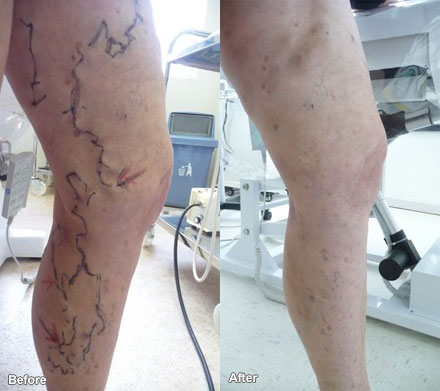9 The Strand Penshurst
NSW 2222, Australia
02 9580 5320
Phlebectomy – Bulging Veins
Ambulatory phlebectomy is a treatment for superficial varicose veins. The procedure involves the removal of the varicose veins through small 2–3 mm incisions in the skin overlying the veins.
 Ambulatory phlebectomy permits removal of incompetent veins below the saphenofemoral and saphenopopliteal junctions, not including the proximal great or short saphenous veins. The junctions themselves cannot be treated with simple phlebectomy because junctional reflux must be addressed by endovenous ablation methods, which allow saphenous reflux to be addressed. Veins that may be removed by ambulatory phlebectomy include major tributaries such as the anterolateral vein, pudendal vein, and branches of the saphenous vein around and below the knee. Perforators and reticular veins may also be addressed, with rarely including small reticular veins associated with telangiectasias.
Ambulatory phlebectomy permits removal of incompetent veins below the saphenofemoral and saphenopopliteal junctions, not including the proximal great or short saphenous veins. The junctions themselves cannot be treated with simple phlebectomy because junctional reflux must be addressed by endovenous ablation methods, which allow saphenous reflux to be addressed. Veins that may be removed by ambulatory phlebectomy include major tributaries such as the anterolateral vein, pudendal vein, and branches of the saphenous vein around and below the knee. Perforators and reticular veins may also be addressed, with rarely including small reticular veins associated with telangiectasias.
Skin incisions as small as 1 mm or needle punctures using an 18-gauge needle or larger are used to extract veins with a phlebectomy hook. The procedure is well tolerated by patients under local anesthesia and typically produces good cosmetic results. Long-term results from the authors’ experience are excellent as long as the most proximal source of reflux is eliminated by endovenous ablation techniques. In contrast to sclerotherapy of large varicose veins, ambulatory phlebectomy minimizes the risks of intra-arterial injection, skin necrosis, and residual hyperpigmentation. The source vein is extracted by the procedure.
Traditional venous ligation is no longer considered an acceptable method because the vein is interrupted rather than removed, leading to relatively high recurrence rates. With ambulatory phlebectomy, the small size of the skin incision or puncture usually results in little or no scarring. Only performed under local anesthesia, ambulatory phlebectomy leads to greatly reduced surgical risks compared with traditional surgery for truncal (axial), reticular varicose veins and incompetent perforators.
